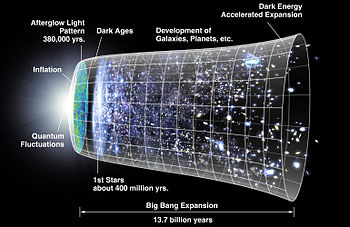Let's travel to space - Galaxies - 02
In the last episode we read about Galaxies, its shapes and sizes.
So, where do these galaxies come from?
You might be surprised to know that we don’t have a definite answer for this yet.
 But most of the Astronomers believe that ‘Big bang theory’ gives the explanation behind the formation of Galaxies.
But most of the Astronomers believe that ‘Big bang theory’ gives the explanation behind the formation of Galaxies.
What is Big Bang theory?
The big bang theory is an attempt to describe how the universe developed from a very tiny, dense state into what it is today.
As per the theory, a small matter expanded (inflated) over the 13.8 billion years to form the universe that we know today.
The theory is actually a scientific model.
To understand this theory, let us consider a simple balloon, a balloon without air.
Now when we blow air into the balloon, it slowly inflates. So after a few minutes, the small balloon can be transformed into a giant balloon.
Similarly a matter which was very small, inflated very slowly for 13.8 billion years (just imagine that!!!) to become our huge universe.
Isn’t it fantastic?
Image in the right shows an artist's concept of the metric expansion of space, where space is represented at each time by the circular sections.
So, how old is our universe?
As mentioned above, scientists believe that the Big Bang took place about 13.8 billion years ago.
How are new stars formed?
The most common elements of the early universe were Hydrogen and Helium. Most of the stars are made of these same elements in addition to small amounts of other elements.
Gases in space slowly starts to collect themselves and thicken. The gravitational force pulls in more matter and thus forming new stars.
And stars glow due to the heat and light.
So, do we know everything about the space?
 No we don’t! The stars and galaxies that we can see is just above four percent of the total space.
No we don’t! The stars and galaxies that we can see is just above four percent of the total space.
Yes, we still don’t know what’s in the remaining 96% of space.
Those 96% is composed of dark matter (23%) and dark energy (73%)
Though we can detect their presence, we cannot see them.
Image in the right side shows the 3D map of the large-scale distribution of dark matter, reconstructed from measurements of weak gravitational lensing with the Hubble Space Telescope
We will continue to explore the galaxy in the next episode! Stay tuned!
*Images are from wikipedia and are used for illustration purpose only!